Click on buttons to see images and animations produced by these TASC projects. The animations are best viewed using FireFox or Internet Explorer web browsers. Please exit individual animations using your browser's back arrow.
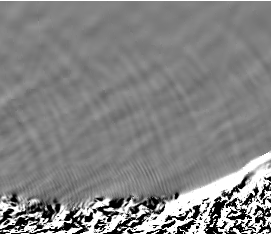
Aeroacoustics
The TASC has received funding to study aeroacoustic signatures of objects in the subsonic and transonic regimes using CharlesX.

Turbulent Mixing of Passive Scalars
The TASC has received funding to study turbulent passive-scalar mixing in low-Mach number flows in complex geometries using CharlesX.
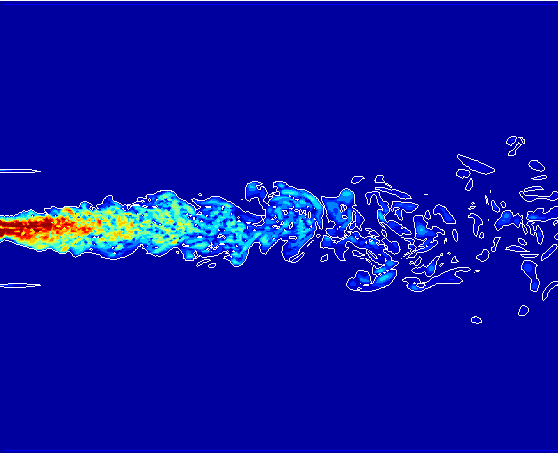
Particle Aggregation
TASC members are developing advanced numerical methods to study the aggregation and coagulation of weakly diffusive nano-sized particles in environmental flows with BRADY, our advanced incompressible mixing and reaction code that incorporates the nLES Method.
Mixing Intensity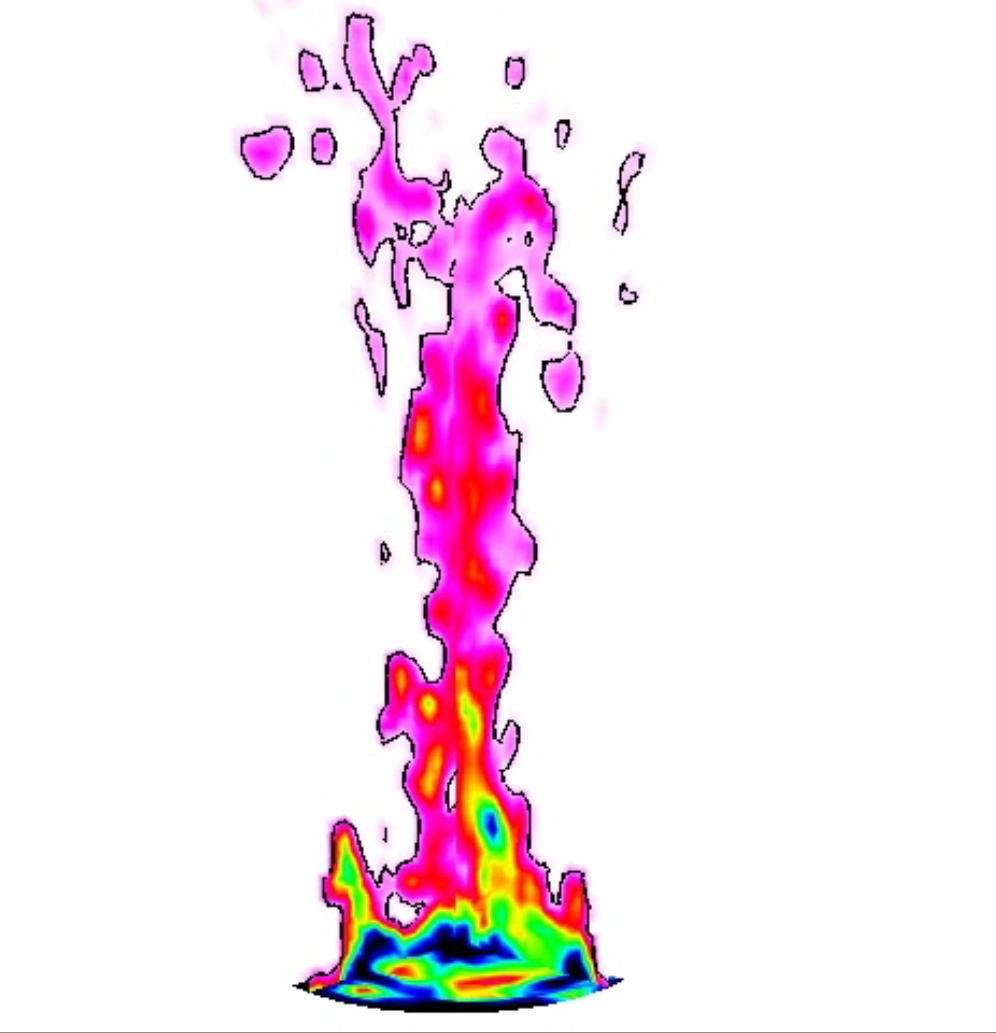
Pool Fires
Using our variable-density nLES code DOOLIN, which incorporates the nLES Method, we are studying the dynamics of instabilities in pool fires, and exploring strategies to extinguish this costly phenomenon generated by a variety of industrial accidents.
Helium Plume Density Helium Plume SGS Scalar Prod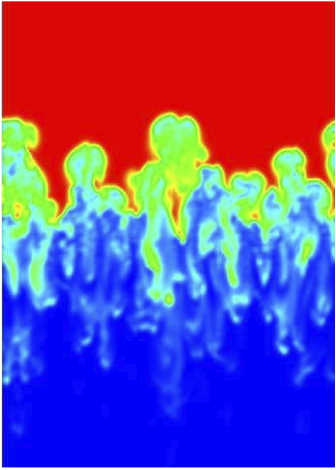
Ultra-High Atwood Number Rayleigh-Taylor Mixing
We are continuing work exploring turbulent mixing and transport in extremely challenging ultra-high Atwood-number Rayleigh-Taylor flows using our nLES code DOOLIN.
RTI A=0.94 Density RTI A=0.94 Bubbles RTI A=0.94 Spikes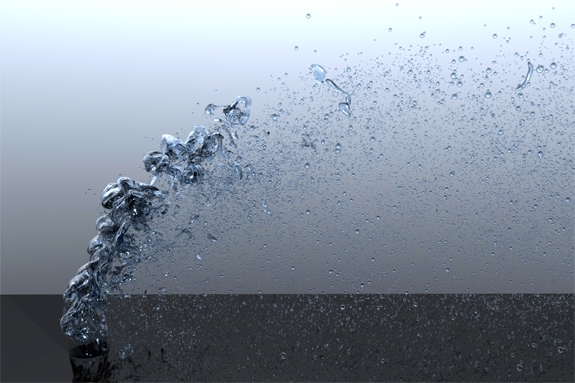
Droplet and Spray Atomization
We are supporting work led by GE Global Research in collaboration with researchers at Cornell University and Arizona State University to evaluate the newest numerical methods for high fidelity simulation of turbulent spray atomization in massively parallel configurations (Image courtesy ASU).
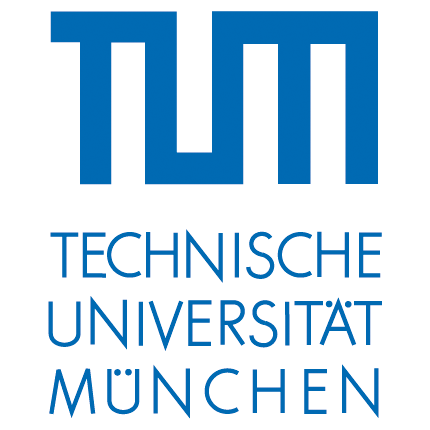
nLES Method Development on Unstructured Meshes
We are jointly conducting fundamental research with the Technical University of Munich, Germany to extend the nLES Method to variable-density and compressible problems on unstructured meshes.
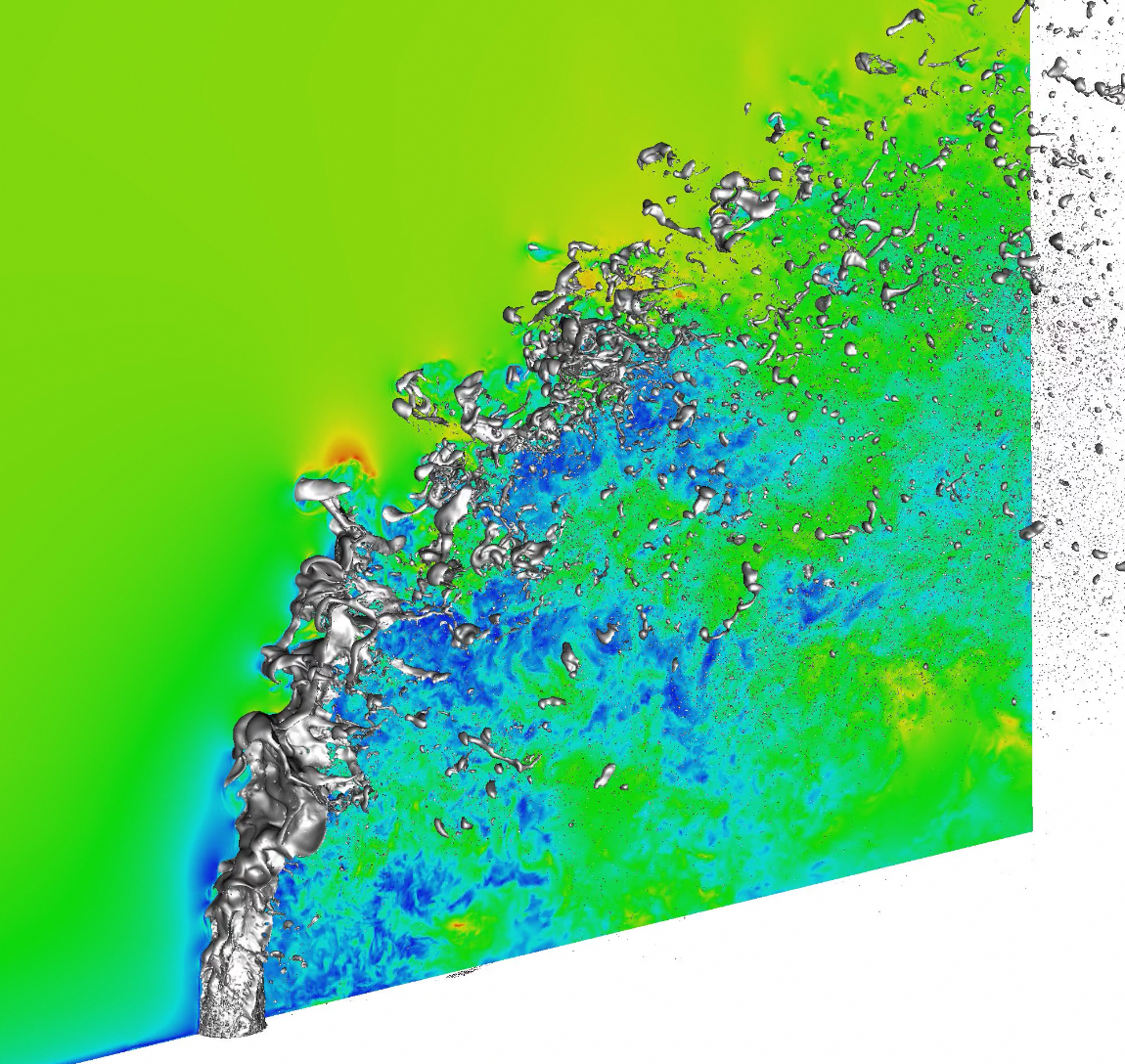
Heroic Turbulent Spray Simulation
In the summer of 2013, we will conduct, in collaboration with researchers at Cornell University, the largest-ever direct numerical simulation of turbulent spray atomization. This landmark simulation will use over 100,000 cores on LLNL's new VULCAN supercomputer, and will produce the highest resolution dataset ever obtained of the liquid spray atomization process. Analysis of this work will spur the development more efficient, reliable and safer jet engine designs (Image courtesy O. Desjardins, Cornell).




